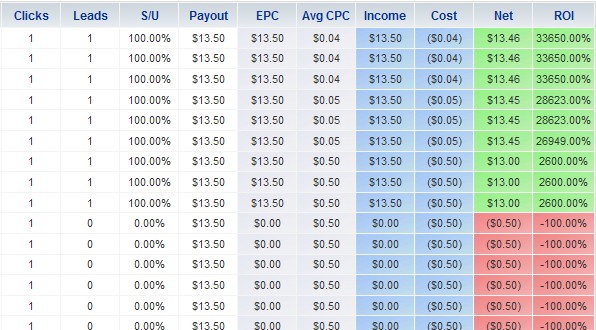One of the strengths of Affiliate Marketers is that they can move quickly. When Michael Jackson died last year, it only took a matter of hours before affiliates were targeting people searching for news on the subject. This ability to move quickly is what sets affiliates apart from big advertising agencies and old-school marketing firms. However, it can also lead to a paralyzing condition that I like to call Affiliate Hyperactive Disorder.

Monkey set up offers. Monkey not make money.
Affiliate Hyperactive Disorder (AffHD for short) is when you have so many campaigns to test that you end up throwing them all up against the wall to see what sticks. Unfortunately, what often happens is that none of them stick. Then you are left thinking that you have exhausted all of your resources and have nothing to show for it. You might think that, but you are wrong.
What actually happened is that you became a campaign creation robot. When AffHD kicks in, your creativity center in the brain turns off. You become a monkey copying and pasting links from one place into the other, and when all is said and done you really haven’t added to much value to the process. No wonder those campaigns aren’t converting, there was no real effort put into their creation!
New affiliates are particularly susceptible to AffHD. After they have received a couple of conversions the first thing they want to do is go set up 10 or 20 more campaigns. If it worked once why not just duplicate it on a large scale? The problem is, they don’t understand why the first campaign worked. They haven’t taken the time to split test targets, keywords, landing pages, and creatives until they know beyond a shadow of a doubt why that campaign worked. If they don’t do that, they are leaving money on the table. If they don’t do that, they haven’t squeezed every last drop of ROI out of the campaign that they already have running. This must be done before you move on to start something new.
You should be spending 70% of your time working on scaling your successful campaigns and only 30% of your time testing out new niches. Think about any other business you could be in. If you made all of your money selling blue widgets, you wouldn’t suddenly focus all of your attention on trying to push green widgets, would you? Of course not! You would spend most of your time trying to sell as many blue widgets as possible. Then when you have a spare hour or two, you could figure out if people want green widgets. Does that make sense?
The key to avoiding Affiliate Hyperactive Disorder is simple: focus.

